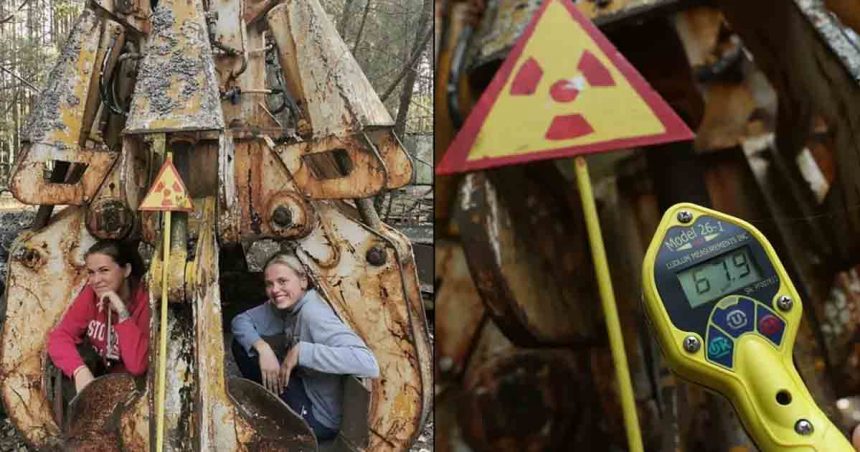Recent headlines have highlighted tourists visiting the Chernobyl exclusion zone, risking exposure by posing with a large claw from a digger used in the aftermath of the 1986 disaster. This dangerous relic underscores the ongoing fascination and hazards associated with the Chernobyl site.
The Chernobyl Disaster and Its Legacy
The Chernobyl nuclear disaster in 1986 led to widespread radioactive contamination and the establishment of an exclusion zone around the power plant. The area, once accessible to tourists, has now become a warzone due to the Russian invasion of Ukraine, making visits highly dangerous.1 Remnants of the disaster, including highly radioactive materials, still litter the exclusion zone.
Read More: 16 Photos Proving That Kids Always Know How to Make You Smile
The Infamous Claw
One of the most hazardous artifacts in Chernobyl’s exclusion zone is a large claw used during the cleanup of reactor number four. This claw, recorded with radiation levels of 39.80 microsieverts per hour (uSv/h) in 2019, is over 100 times more radioactive than typical background levels.
Tourists’ Reckless Encounter

In a recent incident, tourists were photographed climbing inside and touching the radioactive claw, driven by the desire for social media attention. While brief exposure may not cause immediate harm, prolonged contact or contamination from radioactive dust could have serious long-term effects.
Radiation Risks and Health Implications
Although radiation is present throughout Chernobyl, the levels from the claw are dangerously high. Prolonged exposure increases the risk of cancer and other health issues, while even a few minutes near the claw could result in radiation absorption with potential health consequences.
Read More: 10 Ways Photos Help With Dementia Care
The Danger of Radioactive Dust
Aside from direct radiation, touching the claw could lead to radioactive dust adhering to clothing or skin, posing a continuous exposure risk. This could have serious health implications over time even after leaving the area.
Historical Context: The Elephant’s Foot and Other Hazards
The claw is not the only hazardous object in the Chernobyl exclusion zone. The infamous Elephant’s Foot and the radioactive clothing in Pripyat’s hospital basement highlight the ongoing dangers in the area.
Conclusion
The recent incident with tourists at Chernobyl serves as a reminder of the enduring hazards within the exclusion zone. While the site’s historical significance is alluring, exposure to high radiation levels and radioactive dust poses significant risks. Visitors must prioritize safety and follow strict guidelines to avoid serious health consequences.
Read More: 12 Photos That Prove We Have No Idea How Food Grows
Sources
- “Tourists pose for photo on one of ‘most radioactive items’ inside the Chernobyl exclusion zone.” Lad Bible. Joe Harker. June 19, 2024.






